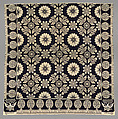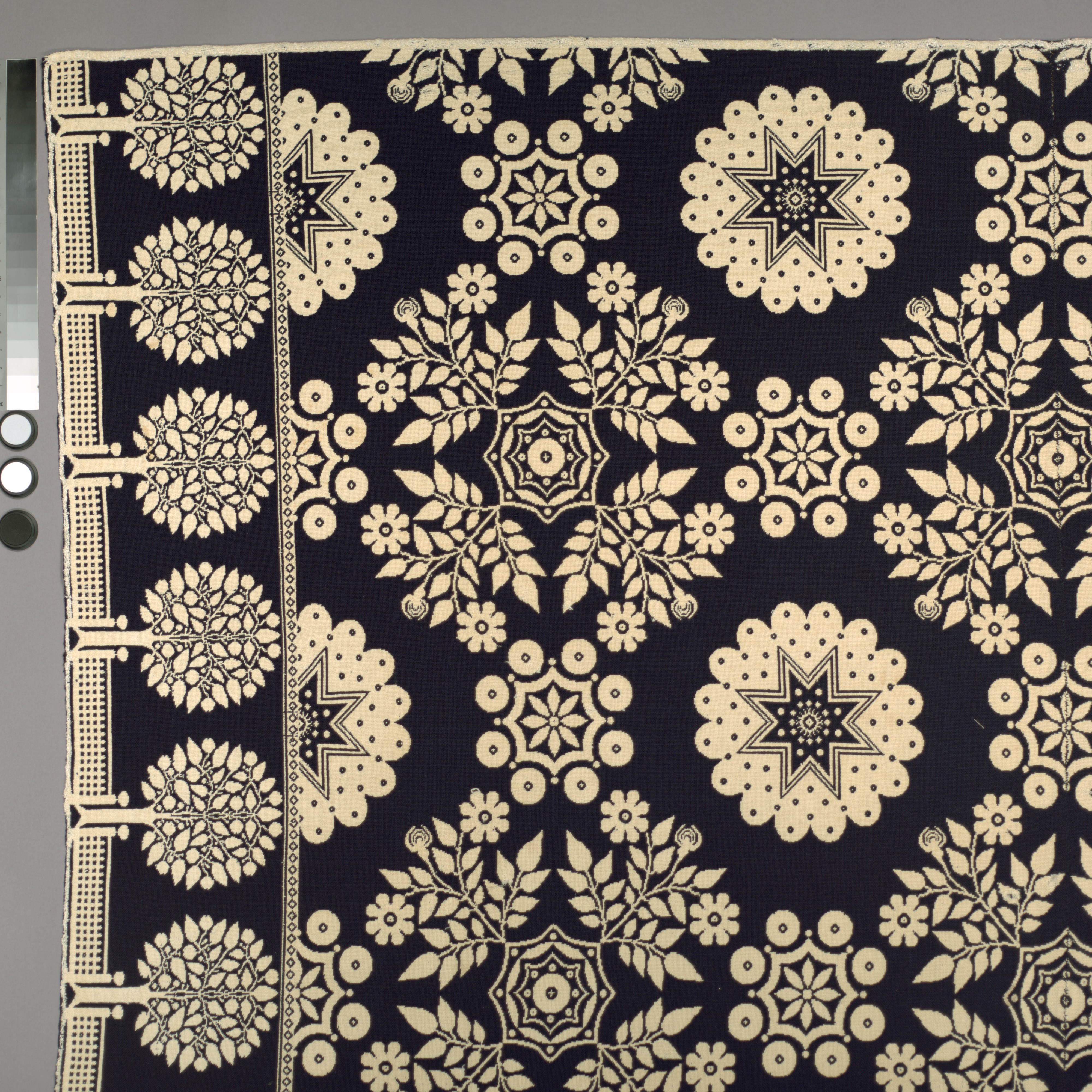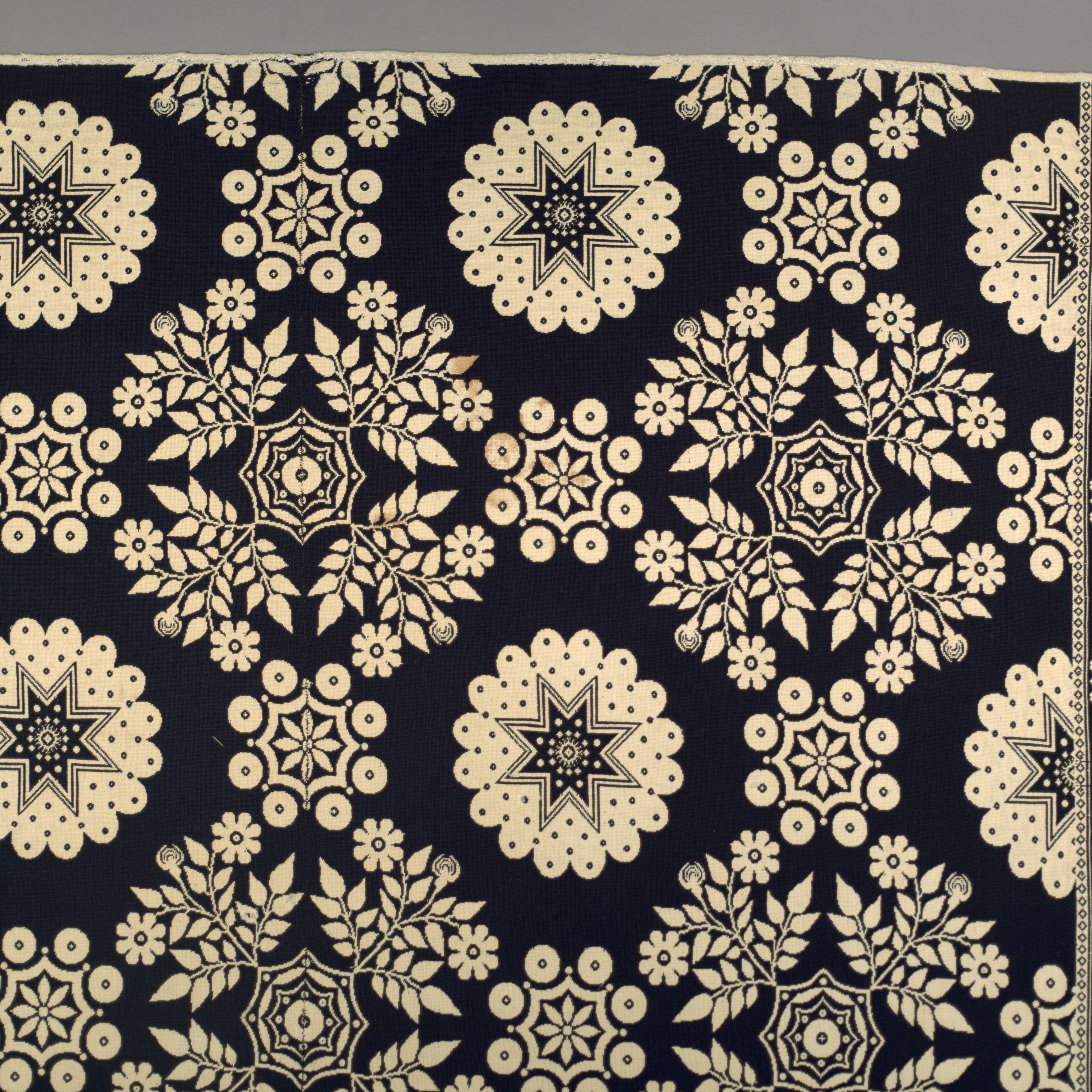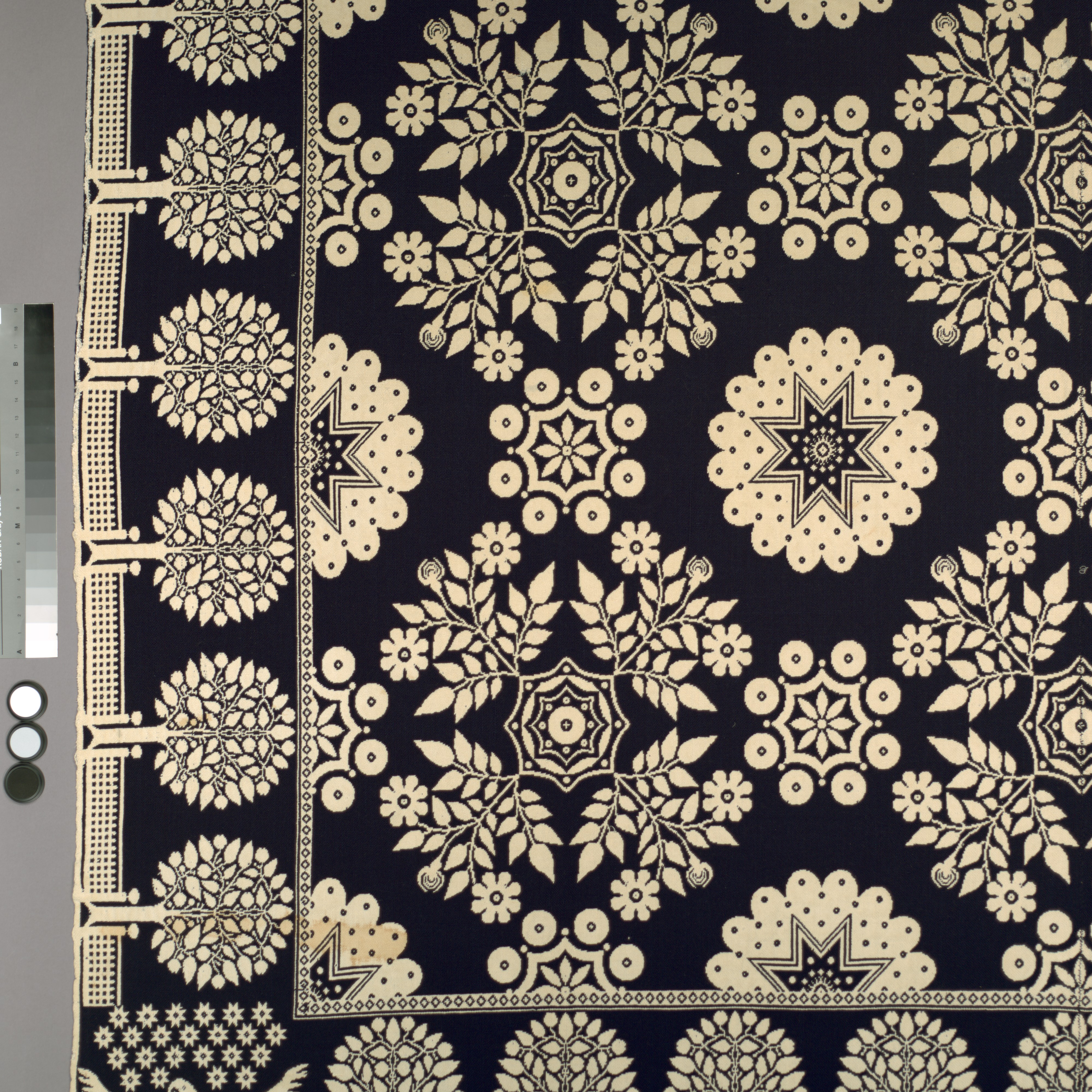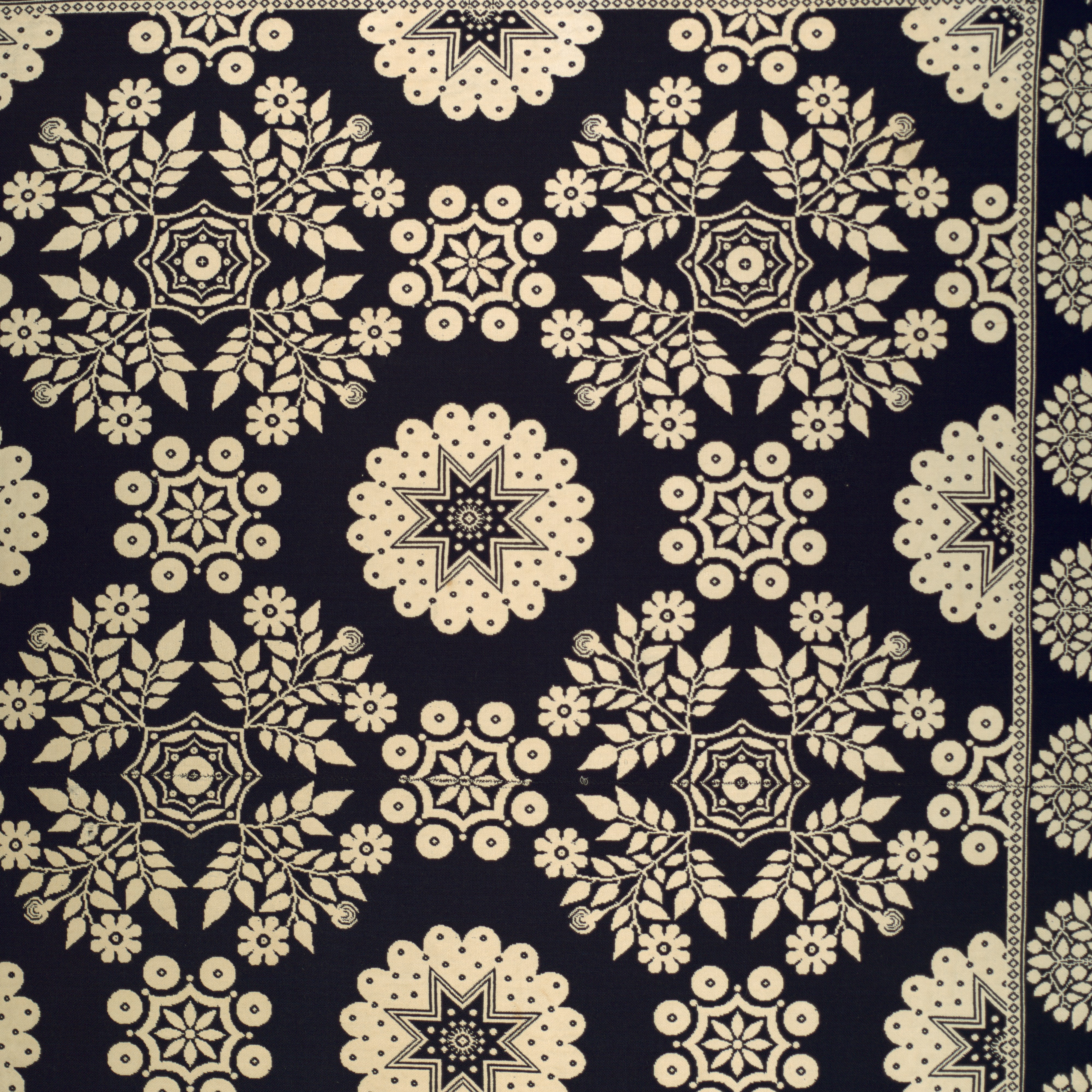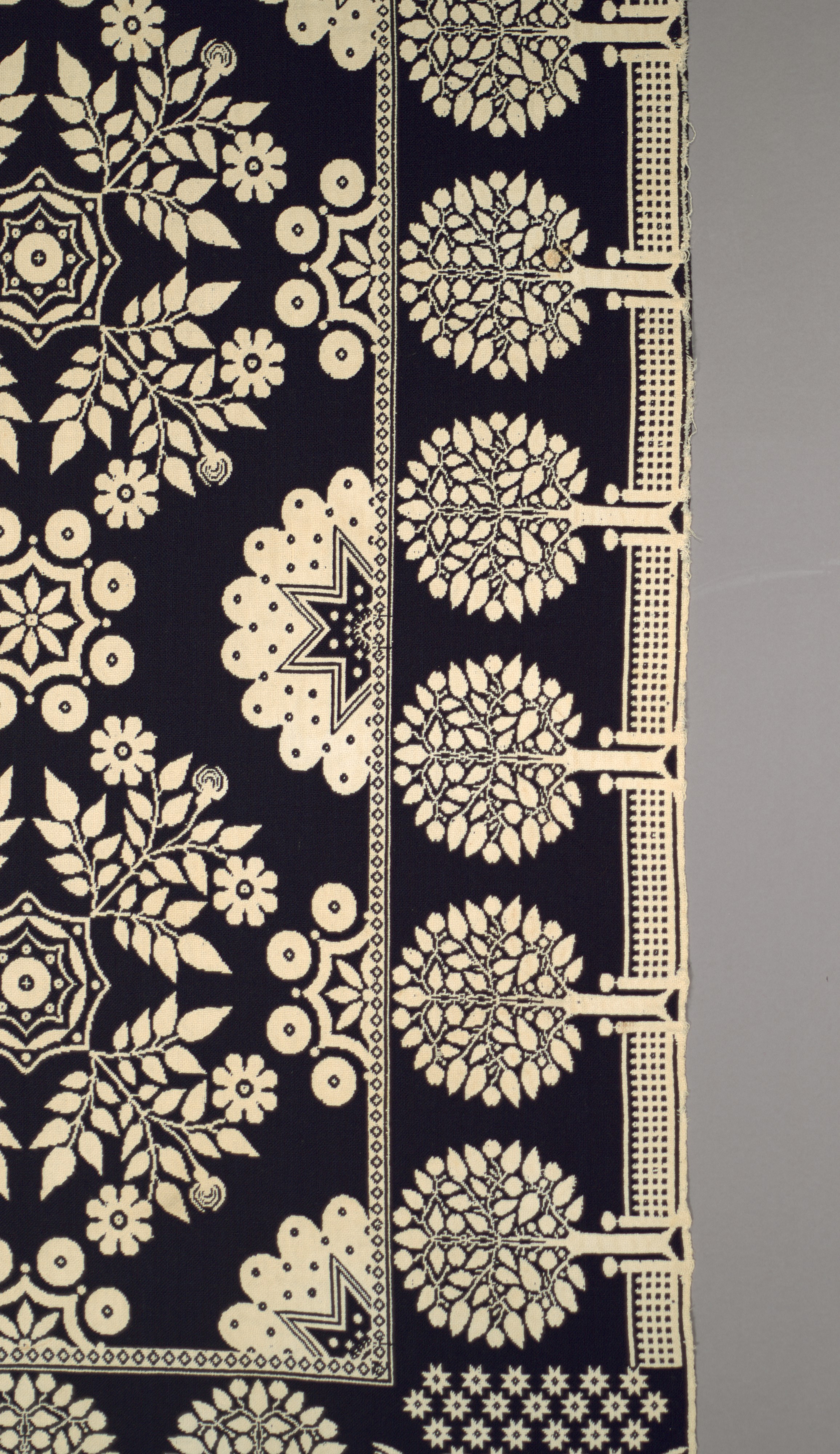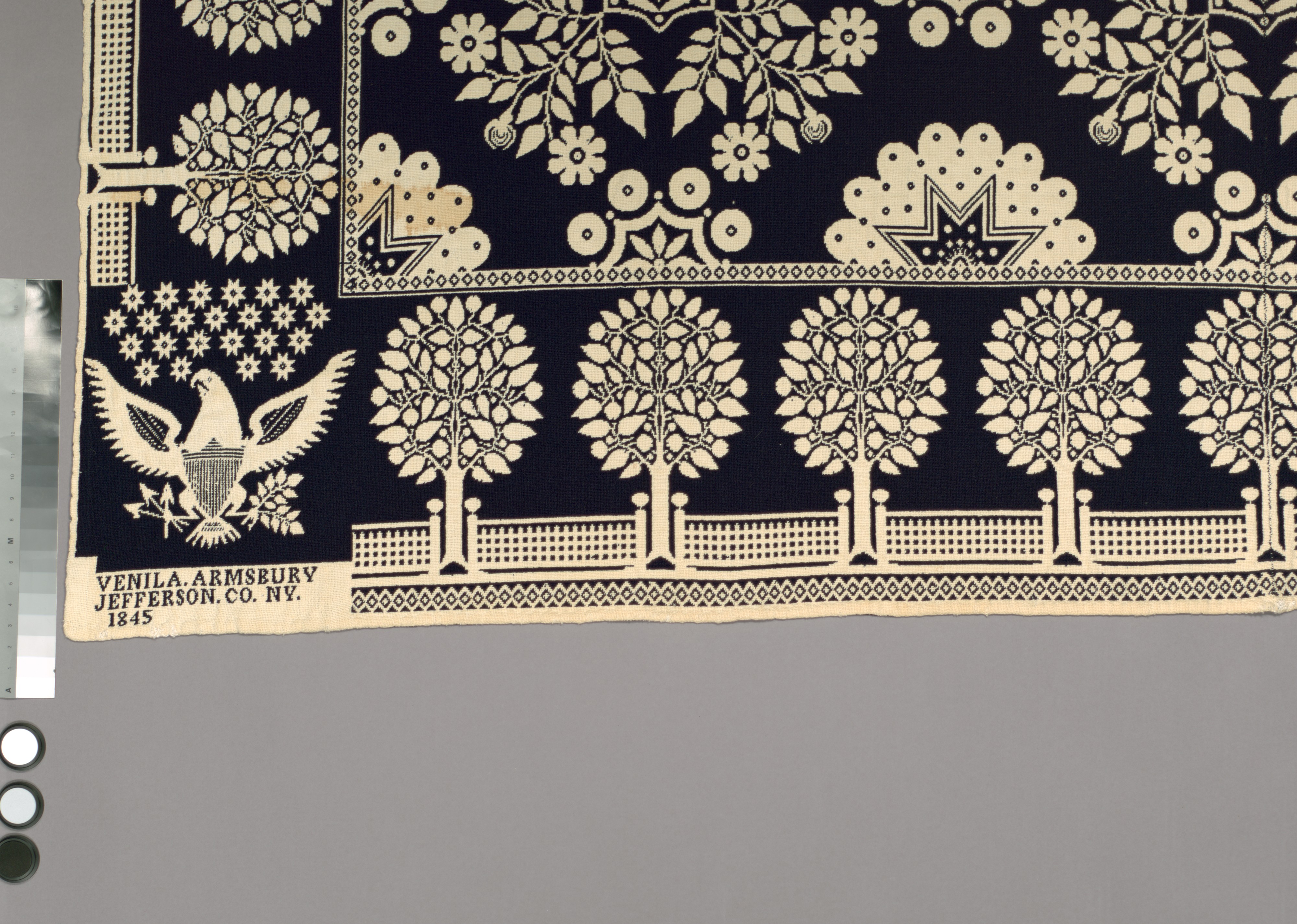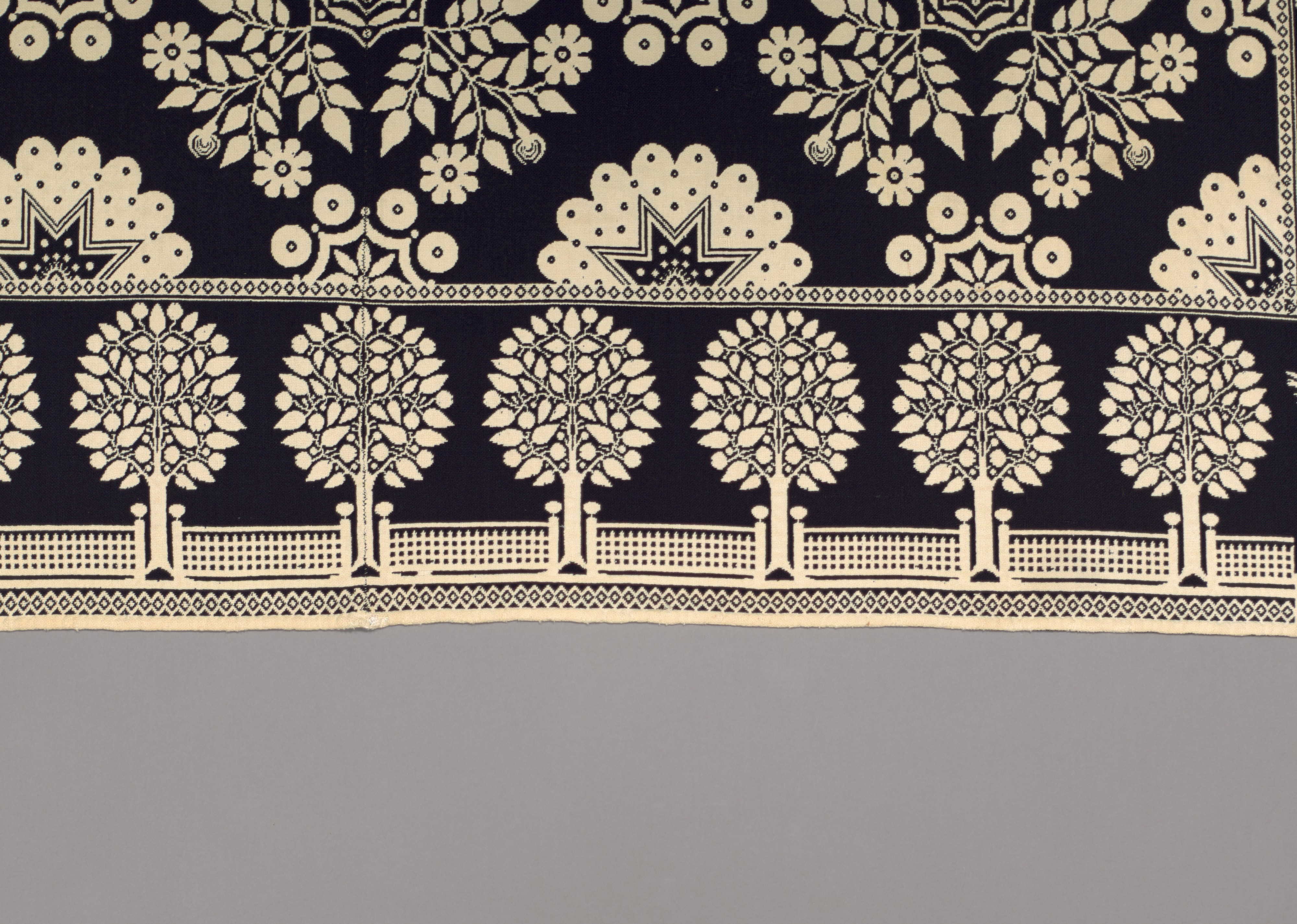Coverlet
Harry Tyler American
Not on view
Coverlets made by Harry Tyler are perhaps the most recognized and appreciated examples of classic New York State doublecloth coverlets. More than three hundred examples of his work are known to be extant. The Tyler workshop’s early products (see 1993.369) made between 1834 and the early 1840s, are known for their appealing trademark corner block showing a large and handsome lion. The field is decorated with stylized floral, star, and snowflake designs set in a diagonal grid pattern, while the border has clearly representational fruit trees alternating with a picket fence. Tyler coverlets made from the mid-1840s on, like this example, have corner blocks with American eagles surmounted by stars; according to family history, this change took place because Tyler’s oldest son Elman opined that the lion, the symbol of England, should be replaced with a more patriotic American motif. Over the twenty-four years that Tyler was weaving, from 1834 to 1858, he made small (and sometimes large) changes to the look of the corner blocks and field designs of his coverlets each year in order to keep up with the popular design trends of his day.
This coverlet descended in a family with roots in Upper New York State and the woman for whom the coverlet was woven was easily identifiable. The name Venila Armsbury is woven into the coverlet dated 1845. Venila Armsbury (1818-1902) was born in Petersburg, Rensselaer County, New York. This coverlet was undoubtedly given to her as a wedding gift, because she married Mark Warren Spaulding (1819-1904) in 1845. Her new husband lived in Jefferson County, home of Harry Tyler, so it is likely that a member of his family presented Venila with the coverlet. After moving several times, the couple eventually settled in Rensselaer Falls, St. Lawrence County, and lived in a large house on the land between the Oswegatchee River and a canal. The family was well-to-do; Spaulding had interests in local quarries, mills, and mines. He was also Justice of the Peace for sixteen years, and proudly lists it as his occupation in the 1880 census. The couple had nine children, and named their firstborn daughter Venila. It became a family tradition for each generation to name a daughter Venila, and pass the coverlet on to her. It descended from Venila Armsbury through three other Venilas before being donated to the Museum by Venila Willard (1910-2005).
Due to rights restrictions, this image cannot be enlarged, viewed at full screen, or downloaded.
This artwork is meant to be viewed from right to left. Scroll left to view more.
